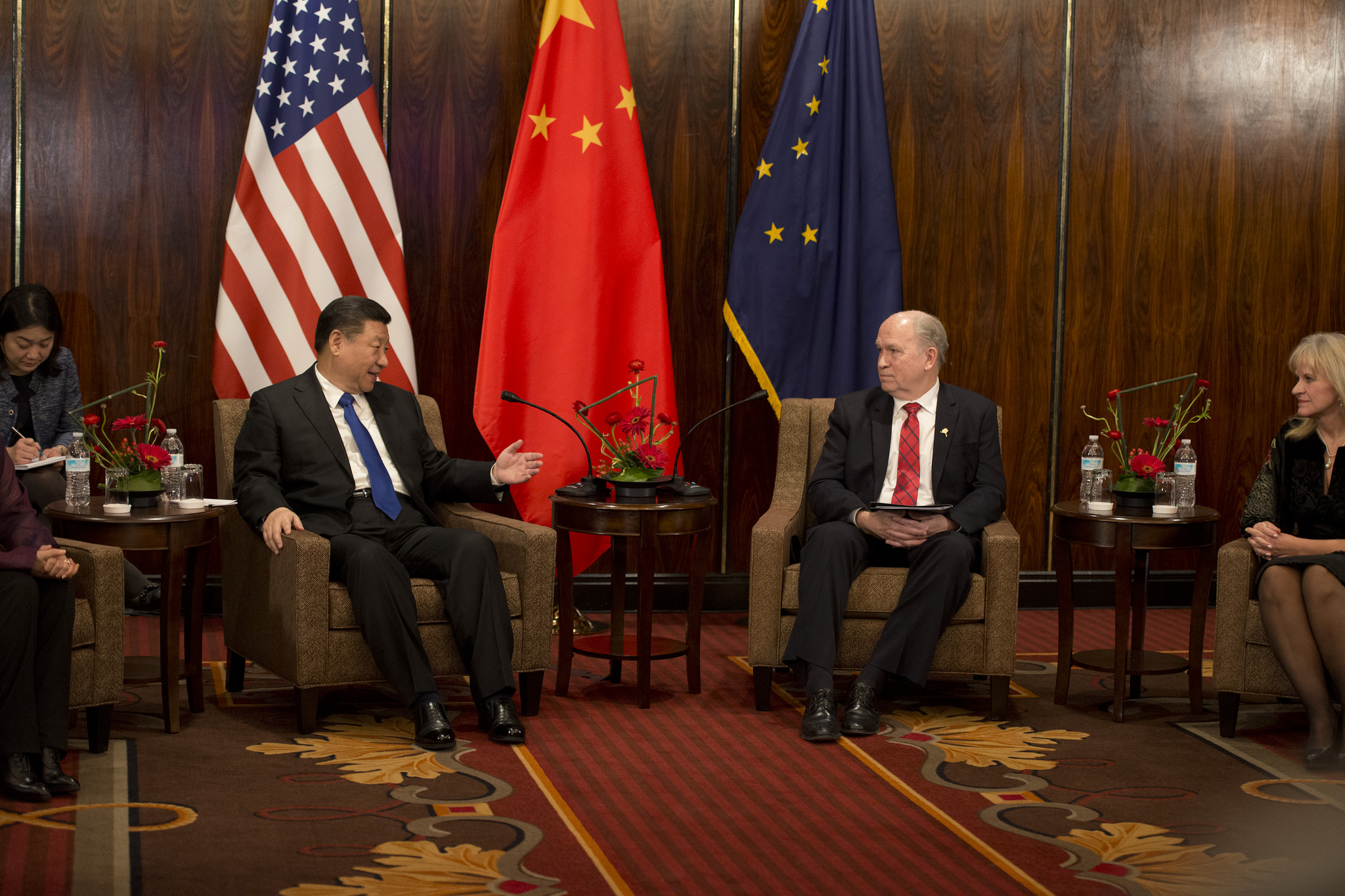Amid tariff jitters, Alaska leaders say China-Alaska LNG relationship is a long-term ‘win-win’
An escalating trade war won't kill a long-sought Arctic LNG project, officials say.

With escalating trade tensions prompting China to threaten tariffs on U.S. liquefied natural gas, Alaska officials on Friday worked to calm fears that such a move would scuttle progress on the long-desired North Slope natural gas pipeline project.
“Alaska’s vast reserves of natural gas can satisfy market demand for nearly a century, and short term trade tensions do not change this long-term value proposition,” Gov. Bill Walker said in a statement. “Alaska LNG would be the largest job-creating infrastructure project in the country, and would generate billions of dollars in revenue. My team and I will continue our work with the Trump Administration to ensure that Chinese and U.S. officials strike a fair compromise so that Alaska’s natural gas reaches the market.”
Benefits of Alaska LNG to China are long-term and far outweigh temporary trade problems, said a statement released by the Alaska Gasline Development Corp., the state agency sponsoring the proposal.
The Alaska Gasline Development Corporation believes the current trade tensions between the United States and China will be resolved well in advance of Alaska LNG exports to China,” said a statement from the agency. “The Alaska LNG project represents a multigenerational project that matches China’s 100 years of natural gas demand with Alaska’s 100 years of supply on the North Slope. As a result, Alaska LNG will continue to present a win-win opportunity for both countries.”
China is proposed as the main market for North Slope natural gas that would be shipped in a $43 billion pipeline project. Chinese institutions — the Bank of China, CIC Capital Corp., and Chinese energy company Sinopec — have pledged their intent to work to bring the North Slope gas project to reality. Signed agreements to cooperate on the project envision that at least 75 percent of the transported North Slope natural gas will go to Chinese markets.
Sinopec, however, recently pulled out of a plan to oversee construction of the pipeline, which would run from Prudhoe Bay to tidewater in southern Alaska’s Cook Inlet. That decision was revealed by AGDC President Keith Meyer last week in an editorial board meeting with the Anchorage Daily News and Alaska Journal of Commerce.
That decision does not represent a retreat from the project, said Gene Therriault, a former state lawmaker who is coordinating governmental relations for AGDC.
“Really, it is just an acknowledgment by Sinopec that they don’t have experience with permafrost issues, Therriault said Friday.
The AGDC statement said work will continue to advance the Alaska LNG project through the permitting process. A draft environmental impact statement is expected to be released in March by the Federal Energy Regulatory Commission, with a final EIS expected by the end of 2019, AGDC said. The organization said it is continuing to work out agreements with potential gas customers across the Asia-Pacific region.
Yereth Rosen is a 2018 Alicia Patterson Foundation fellow.